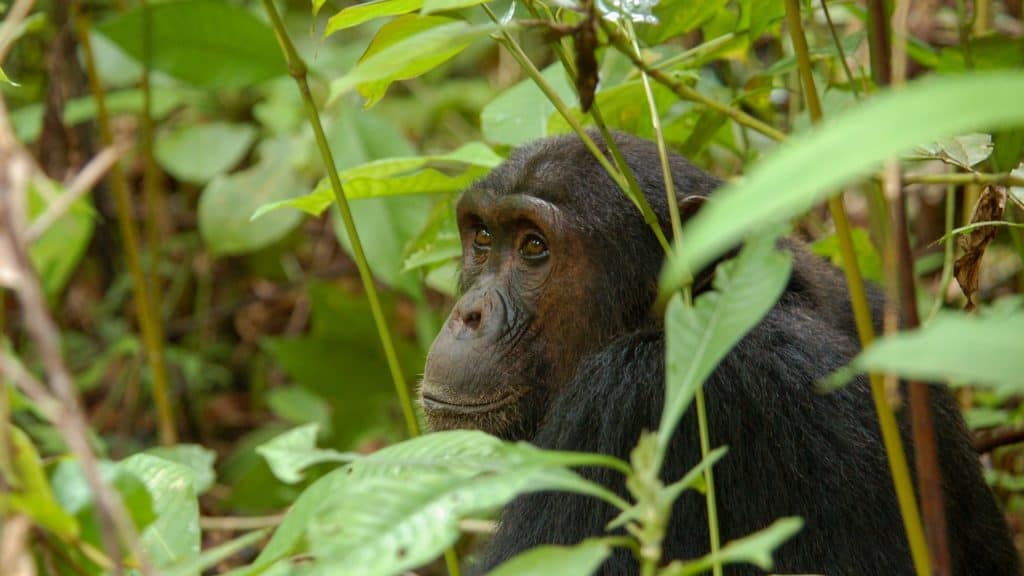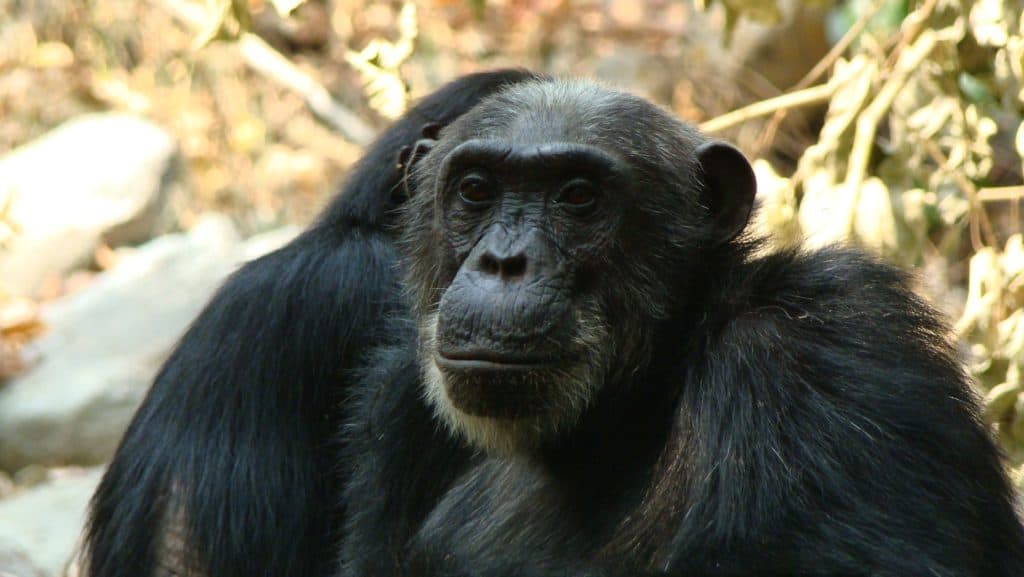Chimpanzee
Chimpanzee
Chimpanzees live in mature swaths of forest where they can access their primary food sources of fruiting trees, insects, and occasionally, monkeys. When food sources are abundant, chimps gather in large groups and behave gregariously. When food sources are more scarce, they tend to spread out into smaller groups and are less vocal to avoid confrontation. There are a small number of locations where habituated chimpanzees may be visited. Habituated groups are typically visited with small groups of tourists. Your time with the chimps will be limited to approximately one hour per day.
There are also a number of less touristed areas where the chimps are in the process of being habituated. Trekking to groups in transition can be exciting and offers more challenging trekking conditions as the chimps can clear large distances and sightings might be more brief. In groups that are not habituated, their vocalizations may be the only sign of their presence.
Chimpanzee Itineraries
Ultimate Uganda
This safari has been custom designed to provide an in-depth adventure in Uganda featuring some of the most intimate and immersive experiences on the continent – primate trekking.
Tanzania Frontier
This safari is the ultimate trip for those who truly want to get away from it all, exploring some of Tanzania's less-visited gems.
Chimpanzee Videos


Best Places to See Chimpanzees

There are currently three habituated areas that deliver the best chimp observation opportunities: the remote Mahale National Park and Gombe Stream National Park in Tanzania, along with the more-accessible Kibale Forest National Park in Uganda.
These are places where sightings happen virtually every day with habituated chimps that continue their activities in the company of human observers. Seasons are different between Tanzania and Uganda for optimal chances for viewing interesting behaviors, but the experience is optimal in both countries during the dry season months of July through October.
Other Areas of Note
Uganda
Rwanda
Nyungwe Forest National Park in southeast Rwanda houses the largest chimpanzee population in Rwanda. However, unlike in Uganda, there is only a 30-40% chance of seeing the chimps due to the vast distances the groups can cover. The park offers stunning forest scenery with over 200 tree species and incredible varieties of orchids. It also houses 86 mammal species including 14 primate species which may be seen from canopy walks and trail networks within the forest. As such, Nyungwe is best for those looking for a forest biodiversity experience rather than a focus on chimp trekking.
Rubondo Island
Rubondo Island sits in the largest lake in Africa, Lake Victoria. It became a game reserve in 1965, and over a period of four years the Frankfurt Zoological Society released 16 chimpanzees into the island. It was gazetted as a national park in 1977, but few visitors made it to the island until recently when Asilia Africa opened a camp in 2013. They have been conducting a chimpanzee habituation program over the last five years. The program has had great successes, however it is not yet as reliable as the trekking from the listed Best Places.
Something Extra
In Kibale, Uganda it is possible to pay an extra fee to spend the entire day in the forest on a “chimpanzee habituation” experience. However, the habituated group is the same group that one visits on a half-day outing. As such, the benefit is to have a longer time in the forest moving from various fruiting fig trees to encounter as much of the group as possible and enjoy a deeper observation of their behavior. Though lunch is packed, there are no tables or chairs in the forest, so it is an adventurous experience that is best suited for those with the energy to be out all day.


